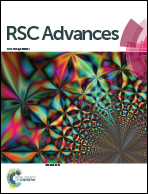The chemistry and bioactivity of Southern African flora I: a bioactivity versus ethnobotanical survey of alkaloid and terpenoid classes
Abstract
As a whole, the African continent is highly endowed with a huge floral biodiversity. Natural products which have been isolated from plants growing in this region have shown interesting chemical structures with diverse biological activities, which could serve as a starting point for drug discovery. In this study, a literature survey led to the collection of 864 secondary metabolites from 101 plant species from 57 plant families. A correlation between the known biological activities of isolated compounds and the ethnobotanical uses of the plants has been attempted. This review is a survey of the bioactivities of alkaloids and terpenoids which have been isolated from Southern African flora versus the ethnobotanical uses of the plants used in Southern African traditional medicine.


 Please wait while we load your content...
Please wait while we load your content...